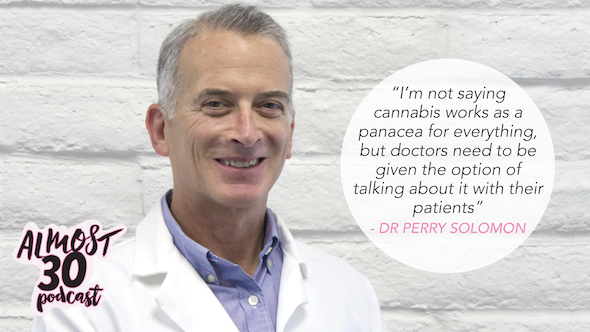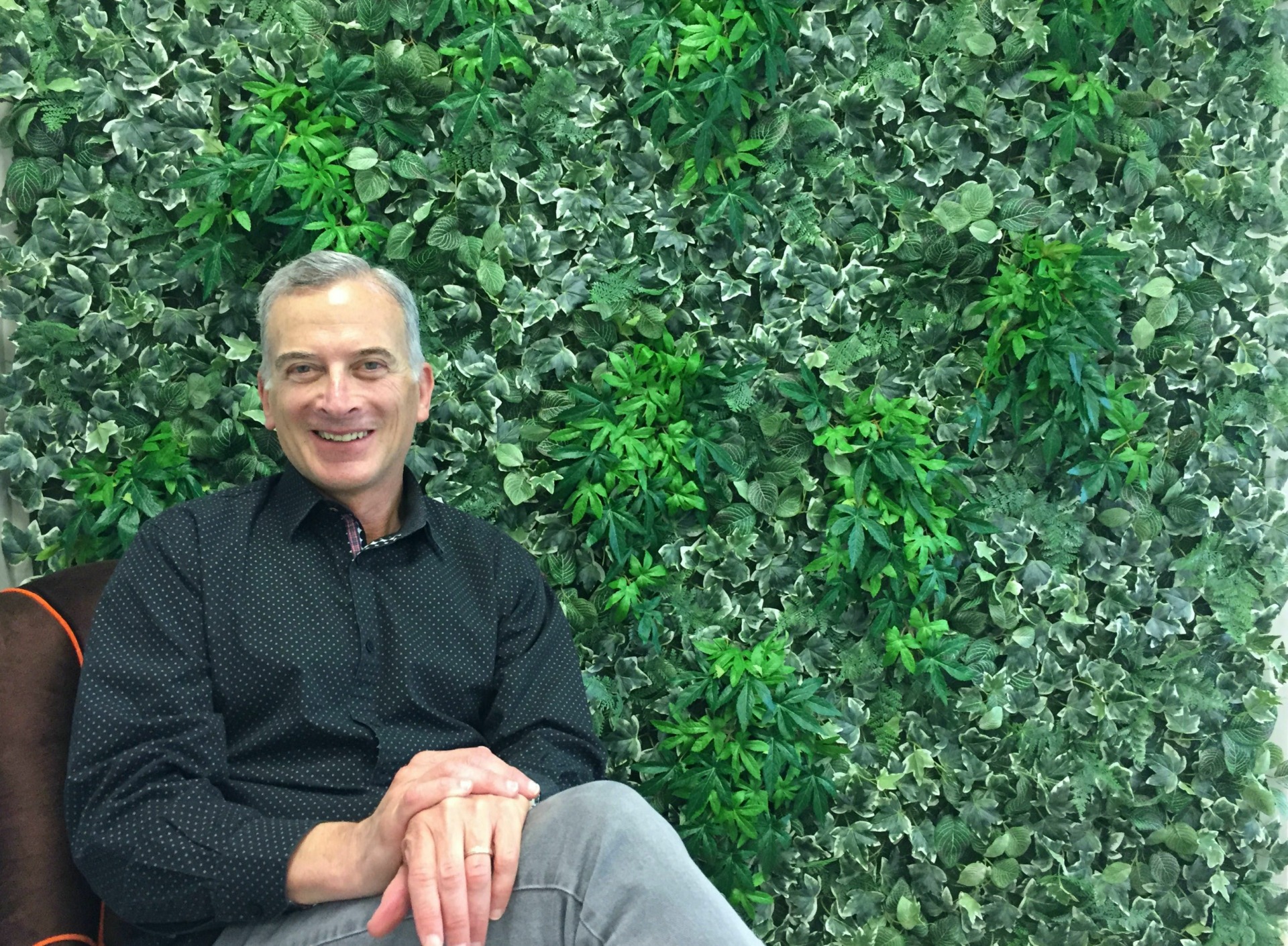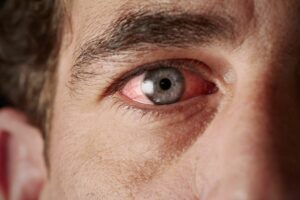HelloMD’s Chief Medical Officer Dr. Perry Solomon was recently featured on “Almost 30,” an iTunes top 10 health podcast. Hosted by Krista Williams and Lindsey Simcik, the podcast’s mission is to “propel personal growth and navigate any transition.” Naturally, gaining a better understanding of cannabis’s healing properties—and how the plant fits into a person’s health and wellness goals—jibes with that mission.
In episodes 104 and 105 of “Almost 30,” Dr. Solomon touches on a lot of different cannabis-related topics including why people were tricked into believing that cannabis is harmful to their health; cannabis as a health and wellness supplement as well as a remedy for pain; and how cannabidiol (CBD) oil is used in suppository form to help relieve menstrual cramps.
FOLLOW US ON FACEBOOK & INSTAGRAM
Check out a few excerpts taken from parts 1 and 2 of the “Almost 30” podcast featuring Dr. Solomon. You can also listen to episode 104 and episode 105 in their entirety online.
Almost 30: Can you talk to us about the science behind how [cannabis] works, and how it subdues pain, and it’s relaxing people, helping people sleep, reducing anxiety. I don’t know the science behind it. I just know it works.
** Dr Perry Solomon:** Basically … the endocannabinoid system is a system of homeostasis in our bodies that keeps everything in check. It’s something that was discovered around the 1970s, early 1970s by Raphael Mechoulam in Israel. And it’s something that genetically has been there for thousands and thousands of years [in terms of having a check and balance system in the body].
In other words, what happens is you have synapses in your body, and chemicals become released from one side, or from one synapse to the other, … to transfer information and sensations, and what happens is there’s a retrograde feedback mechanism. Picture two ends of a wire, and from one end the electricity or the information goes to the other end, and if something gets overstimulated because it’s out of balance, the endocannabinoid system is the system that takes the second signal, goes back to the first signal and says, ‘OK, slow down that rate of firing for pain or sensation or anxiety.’
And usually when the body’s in homeostasis, the endocannabinoid system (“endo” meaning it’s from your body), or the feedback mechanism, is [in a state where] everything stays nice and cool. Everything’s calm, cool, collected. The pain isn’t there and everything’s fine.
RELATED: MARIJUANA, CANNABINOIDS & HOMEOSTASIS
But when things start firing abnormally, the endocannabinoid system gets kind of out of whack. And if you have a decrease in some of the endocannabinoids such as anandamide and 2AG—these are natural chemicals that are found in your body that act as that retrograde feedback blocker to slow things down or speed things up—if those are lacking or not in balance, things happen that you don’t want to have to happen, whether it be an immunologic problem, whether it be from pain or anything else.
Phytocannabinoids, the things that are in cannabis (“phyto” meaning plant), … match up to the two types of cannabinoid receptors, CB1 and CB2, that are found in the body. These are THC (tetrahydrocannabinol) and CBD. Each of these phytocannabinoids takes the place of the endocannabinoids that may be deficient, and so the chemicals that you use from the plant eventually take over for the ones that are supposed to be in good balance in your body (but aren’t or are lacking).
CBD, for example, is more of an anti-inflammatory compound that helps with the CB2 receptors, which are concentrated in the inflammatory tissues in the body. And THC concentrates on the CB1 receptor that’s mostly found in the brain, which is why you get those psychoactive effects from THC, and you don’t get it from CBD—because there aren’t many CBD receptors, or CB2 receptors, in the brain.

A30: So, THC is the psychoactive compound?
PS: Correct. And it’s psychoactive because of the fact that the CB1 receptor is primarily in the brain. It’s thought that the runner’s high and the other things that occur are because anandamide goes up into the brain, causing that rush of feeling. … People call this the endorphin rush, and it’s probably not that. It’s probably the anandamide that’s getting into the brain, because endorphins don’t cross the blood-brain barrier to get into the head. So, the rush that they’re feeling is probably from the endocannabinoid system in the brain more than anything else.
RELATED: WHY DOES CANNABIS MAKE YOU FEEL GOOD?
A30: What are some of the symptoms that people are saying that CBD helps them with?
PS: Well, for example, menstrual cramps in women. There are some suppositories that are coming out that are just CBD as an anti-inflammatory that appear to be working without any THC in it. … Again, it’s an individualized type of thing. People use it also for migraines. This is another way that people are using CBD only to be able to treat that.
Again, the entourage effect seems to show that the cannabis may work a little bit better with both CBD and THC, but there are people who get a fantastic response with just a CBD-only product … for their migraines. Sports recovery is another one where people just use a CBD-only ointment or salve on their skin to help muscles relax a little bit. And also, again, because muscle injuries are an inflammatory type of byproduct of exercise.
A30: I love using the CBD creams and things. So, what is it actually doing? So, it’s being absorbed into the skin and into the bloodstream? And it’s connecting the CB1 receptor to the CBD?
PS: For CBD, it would be the CB2 receptor. That’s what’s theorized as what it does. With the skin, there are people in the medical community and the cannabis community who feel that it doesn’t get absorbed at all. Some people think that it does. Again, it may get absorbed better with a plastic covering on it, like a patch. What happens with the cream is that some of it can get evaporated up in the air. Some people put it on, and it comes with a plastic cover on it that essentially eliminates any type of evaporative loss, and it all gets put into the skin.
Some people also use the THC/CBD ointment, and they ask us, ‘Well, can I test THC-positive if my work is screening for THC?’ And that’s a questionable thing. It may be that enough can get absorbed to test positive for THC in your urine if your job of tests for that. So, people say, ‘Well, what should I use if they do test me, and I don’t want to take any chances?’ And we say, ‘Well then a CBD-only [product],’ because that’s not something that’s psychoactive or that people are testing for.
If you’re new to cannabis and want to learn more, take a look at our Cannabis 101 post. HelloMD can help you get your medical marijuana recommendation; it’s easy, private and 100% online.






